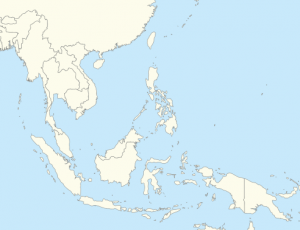We have reported previously on increases in mosquito-borne viruses in south-east Asia this year to include dengue in the Philippines and chikungunya in Thailand.

In addition to these countries, both Malaysia and Vietnam are reporting significant increases in dengue fever year-to-date.
According to the World Health Organization, the cumulative number of reported dengue cases in Malaysia as of 2 March 2019 was 26,545 cases. This is 157% higher compared to 10,343 cases reported during the same period in 2018.
In Vietnam as of 24 February 2019, there have been 38,122 cases of dengue including two deaths reported in Viet Nam. Compared to the same period in 2018 when 10,491 cases with one death were reported, the cumulative number of cases increased by 3.6 times, WHO reports.
Singapore has also reported increases this year. A total of 1,786 cases have been reported to date in 2019, which is higher compared to the 465 cases reported during the same period in 2018.
Vietnam: Pork tapeworm outbreak affects hundreds of children in Bac Ninh
Dengue is a viral infection transmitted by the bite of an infected mosquito. There are four closely related but antigenically different serotypes of the virus that can cause dengue (DEN1, DEN 2, DEN 3, DEN 4).
- Dengue Fever (DF) – marked by an onset of sudden high fever, severe headache, pain behind the eyes, and pain in muscles and joints. Some may also have a rash and varying degree of bleeding from various parts of the body (including nose, mouth and gums or skin bruising).Dengue has a wide spectrum of infection outcome (asymptomatic to symptomatic). Symptomatic illness can vary from dengue fever (DF) to the more serious dengue hemorrhagic fever (DHF).
- Dengue Hemorrhagic Fever (DHF) – is a more severe form, seen only in a small proportion of those infected. DHF is a stereotypic illness characterized by 3 phases; febrile phase with high continuous fever usually lasting for less than 7 days; critical phase (plasma leaking) lasting 1-2 days usually apparent when fever comes down, leading to shock if not detected and treated early; convalescence phase lasting 2-5 days with improvement of appetite, bradycardia (slow heart rate), convalescent rash (white patches in red background), often accompanied by generalized itching (more intense in palms and soles), and diuresis (increase urine output).
- Dengue Shock Syndrome (DSS) — Shock syndrome is a dangerous complication of dengue infection and is associated with high mortality. Severe dengue occurs as a result of secondary infection with a different virus serotype. Increased vascular permeability, together with myocardial dysfunction and dehydration, contribute to the development of shock, with resultant multiorgan failure.

